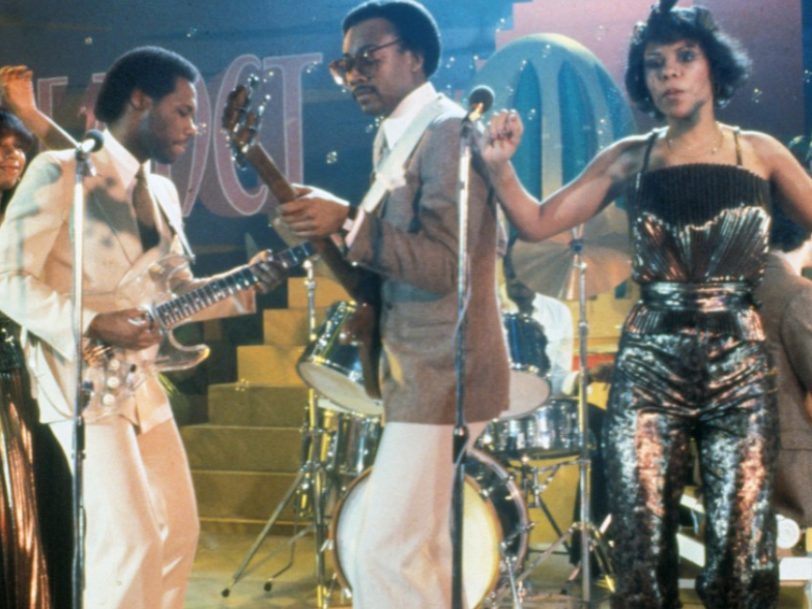Even at the height of its popularity, disco music was regarded by critics as little more than a passing fad. However, for guitarist Nile Rodgers and bassist Bernard Edwards – the musical masterminds behind Chic – the 70s nightclub scene was an invitation to celebrate their fearless musical eclecticism and intelligent artistry. Lyrically smuggling what they called “DHM” (deep hidden meanings) into their funk-lite floor-fillers, the masterminds behind Chic’s self-titled debut album brought a poise and respectability to the disco scene that left a long-lasting legacy on the music industry.
Listen to Chic’s self-titled debut album here.
“Taking white rock and making it Black – reverse traffic, if you will – was key”
Having gigged around New York City’s club circuit playing R&B and soul music as The Big Apple Band, Nile Rodgers always had a wide-ranging taste in music. Influenced as much by the glam-rock showmanship of KISS and the flamboyant pizzazz of Roxy Music as he was by funk and jazz music, Rodgers partnered with Bernard Edwards to add fresh ingredients to disco’s party-going recipe. “This idea of taking white rock and making it Black – reverse traffic, if you will – was key,” Rodgers said. With Edwards cooking up the band name Chic after Rodgers was inspired by Bryan Ferry’s lounge-lizard persona, the duo began dressing in sharp business suits and aimed to mix art-rock glamour with upbeat funk energy.
Released in September 1977 as Chic’s first single, Dance, Dance, Dance (Yowsah, Yowsah, Yowsah) was a relentless ode to throwing shapes on New York’s light-up dancefloors. “We developed a sound that was a fusion of jazz, soul and funk grooves with melodies and lyrics that were more European influenced,” Rodgers said. Pressed up as a white-label record and distributed to disco conventions, Dance, Dance, Dance was an instant DJ favourite, selling a million copies in under a month and peaking at No.6 in both the UK and the US.




